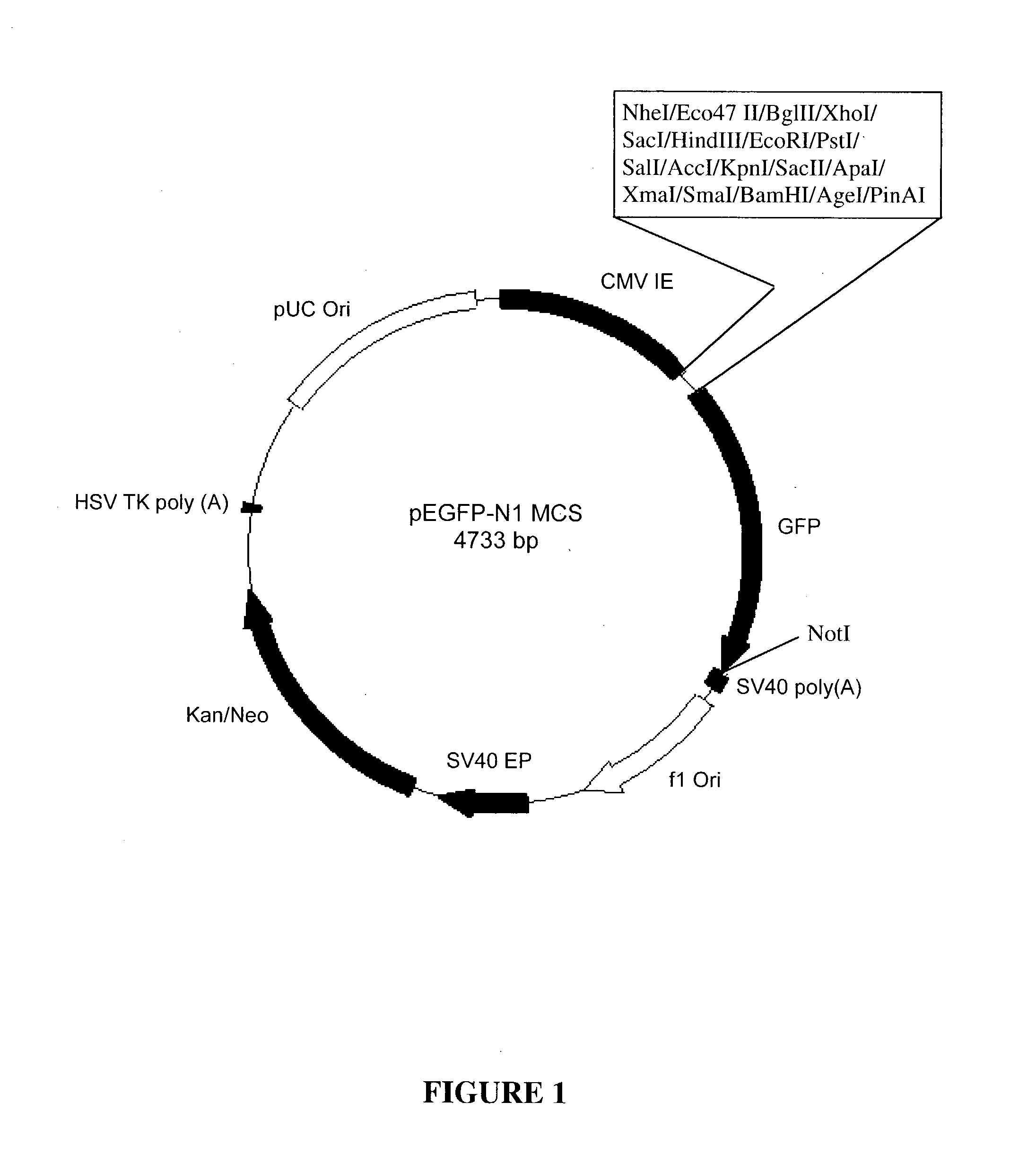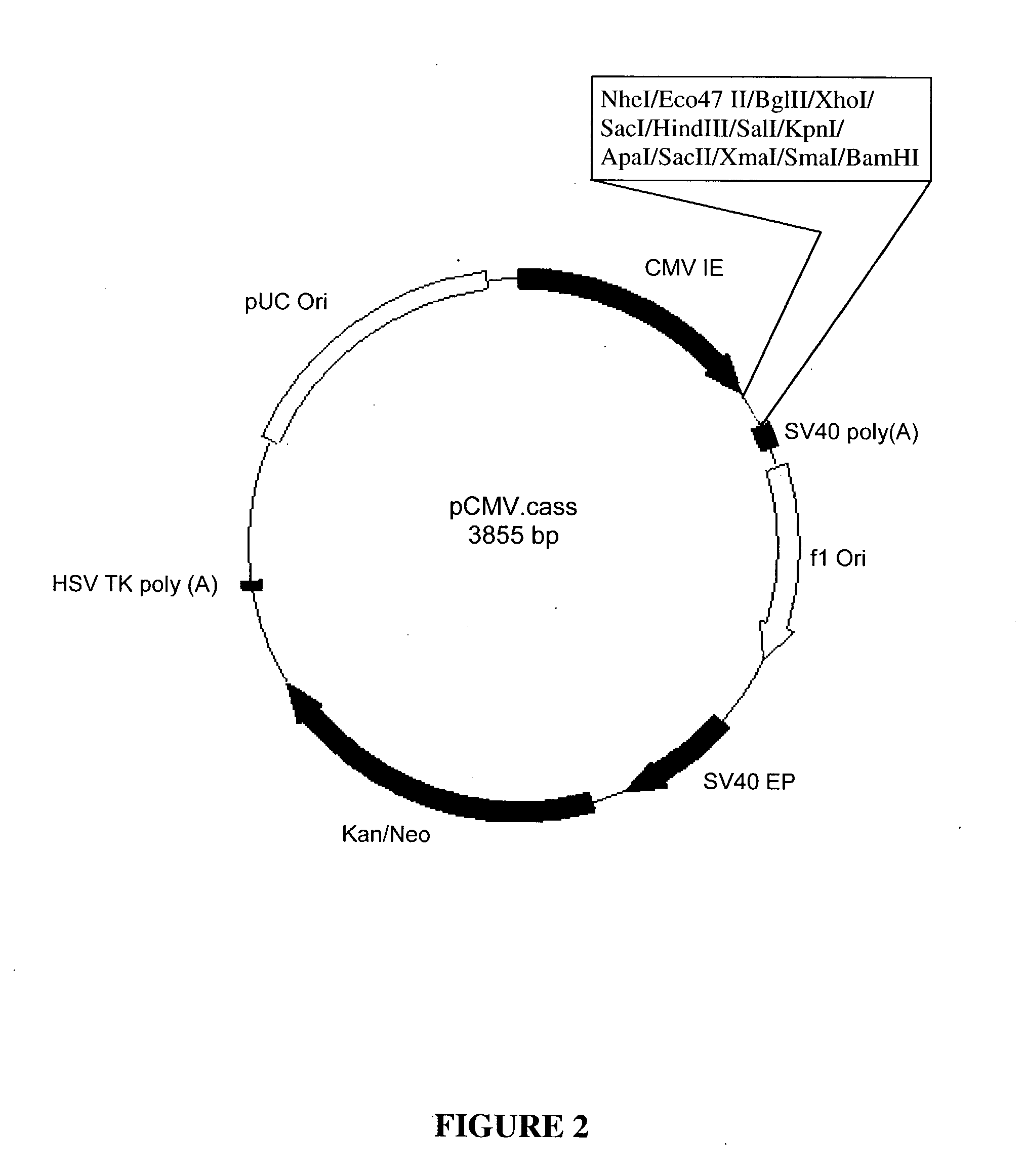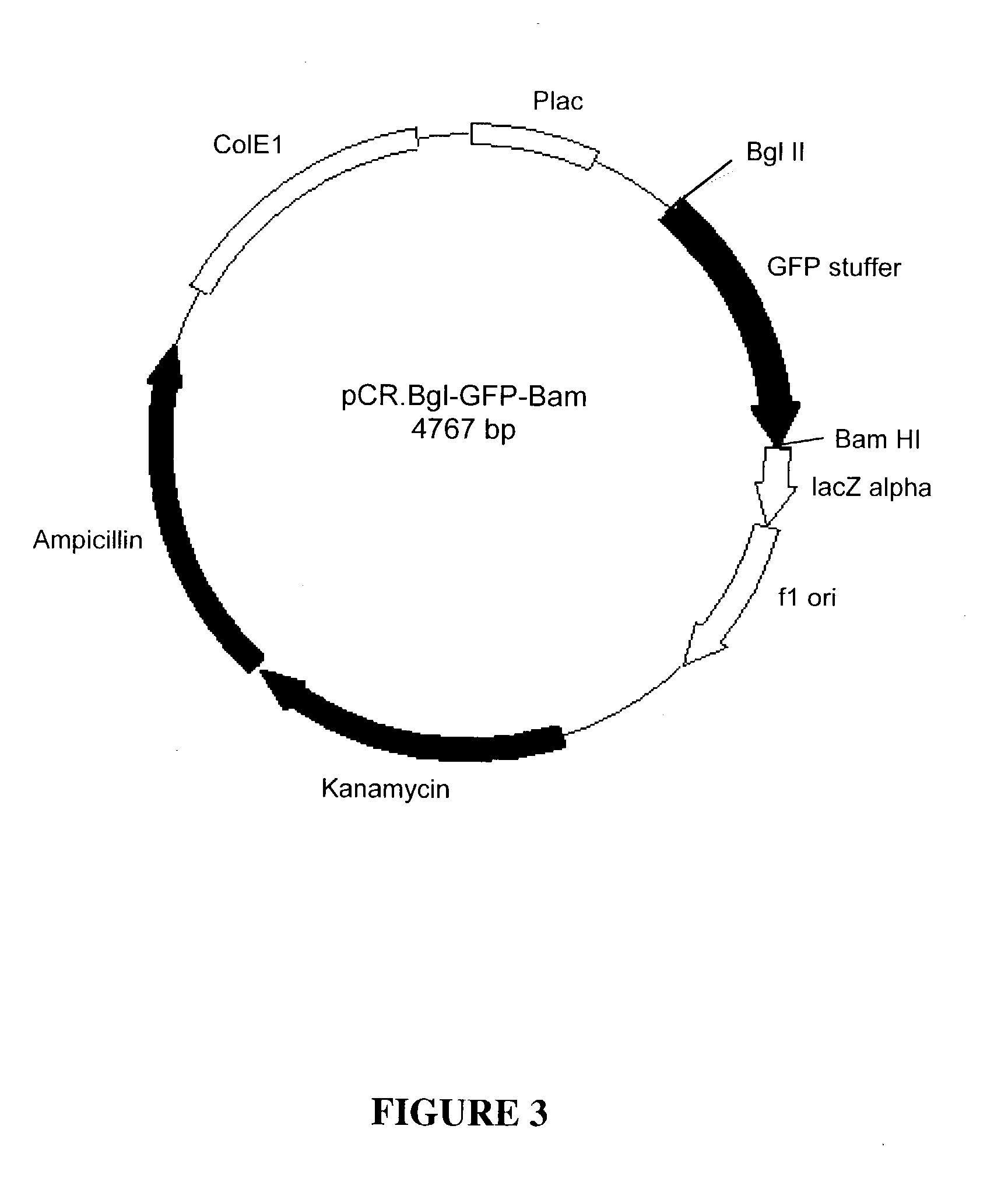Synthetic genes and genetic constructs comprising same I
a technology applied in the field of synthetic genes and genetic constructs comprising same i, can solve the problems of repression, delay or reduction of eukaryotic gene expression, and less progress in actual manipulation of gene expression to produce novel traits
- Summary
- Abstract
- Description
- Claims
- Application Information
AI Technical Summary
Benefits of technology
Problems solved by technology
Method used
Image
Examples
example 2
BEV Polymerase-Containing Genes
[0145] Plasmid pCR.BEV.1
[0146] The BEV RNA-dependent RNA polymerase coding region was amplified as a 1,385 bp DNA fragment from a full-length cDNA clone encoding same, using the primers designated BEV-1 (SEQ ID NO: 1) and BEV-2 (SEQ ID NO: 2), under standard amplification conditions. The amplified DNA contained a 5'-BglII restriction enzyme site, derived from the BEV-1 primer sequence and a 3'BamHI restriction enzyme site, derived from the BEV-2 primer sequence. Additionally, as the BEV-1 primer sequence contains a translation start signal 5'-ATG-3' engineered at positions 15-17 of SEQ ID NO: 1, the amplified BEV polymerase structural gene comprises the start site in-frame with BEV polymerase-encoding nucleotide sequences, Thus, the amplified BEV polymerase structural gene comprises the ATG start codon immediately upstream (ie. juxtaposed) to the BEV polymerase-encoding sequence. There is no translation stop codon in the amplified DNA.
[0147] The amplif...
example 3
Synthetic Genes Comprising a BEV Polymerase Structural Gene Operably Connected to the CMV-IE Promoter Sequence
[0152] Plasmid pEGFP.BEV.1
[0153] Plasmid pEGFP.BEV.1 (FIG. 9) is capable of expressing the BEV polymerase structural gene as a GFP fusion polypeptide under the control of the CMV-IE promoter sequence. To produce plasmid pEGFP.BEV.1, the BEV polymerase sequence from pCR.BEV.1 (FIG. 6) was cloned as a BglII-to-BamHI fragment into BglII / BamHI-digested pEGFP-N1 MCS (FIG. 1).
[0154] Plasmid pCMV.BEV.2
[0155] Plasmid pCMV.BEV.2 (FIG. 10) is capable of expressing the entire BEV polymerase open reading frame under the control of CMV-IE promoter sequence. To produce pCMV.BEV.2, the BEV polymerase sequence from pCR.BEV.2 (FIG. 7) was sub-cloned in the sense orientation as a BglII-to-BamHI fragment into BglII / BamHI-digested pCMV.cass (FIG. 2).
[0156] Plasmid pCMV.VEB
[0157] Plasmid pCMV.VEB (FIG. 11) expresses an antisense BEV polymerase mRNA under the control of the CMV-IE promoter sequen...
example 4
Synthetic Genes Comprising BEV Polymerase Structural Genes Operably Connected to Multiple Promoter Sequences
[0166] Plasmid pCMV.BEV.SV40L-O
[0167] Plasmid pCMV.BEV.SV40L-O (FIG. 16) comprises a translatable BEV polymerase structural gene derived from plasmid pCR.BEV.2 (FIG. 7) inserted in the sense orientation between the CMV-IE promoter and the SV40 late promoter sequences of plasmid pCMV.SV40L.cass (FIG. 5). To produce plasmid pCMV.BEV.SV40L-O, the BEV polymerase structural gene was sub-cloned as a BglII-to-BamHI fragment into BglII-digested pCMV.SV40L.cass DNA.
[0168] Plasmid pCMV.O.SV40L.BEV
[0169] Plasmid pCMV.O.SV40L.BEV (FIG. 17) comprises a translatable BEV polymerase structural gene derived from plasmid pCR.BEV.2 (FIG. 7) cloned downstream of tandem CMV-IE promoter and SV40 late promoter sequences present in plasmid pCMV.SV40L.cass (FIG. 5). To produce plasmid pCMV.O.SV40L.BEV, the BEV polymerase structural gene was sub-cloned in the sense orientation as a BglII-to-BamHI fragm...
PUM
 Login to View More
Login to View More Abstract
Description
Claims
Application Information
 Login to View More
Login to View More - R&D
- Intellectual Property
- Life Sciences
- Materials
- Tech Scout
- Unparalleled Data Quality
- Higher Quality Content
- 60% Fewer Hallucinations
Browse by: Latest US Patents, China's latest patents, Technical Efficacy Thesaurus, Application Domain, Technology Topic, Popular Technical Reports.
© 2025 PatSnap. All rights reserved.Legal|Privacy policy|Modern Slavery Act Transparency Statement|Sitemap|About US| Contact US: help@patsnap.com



